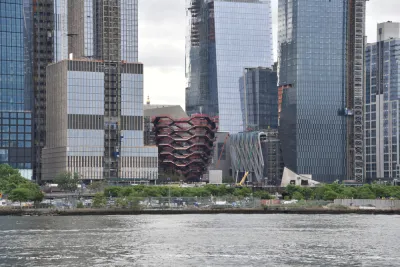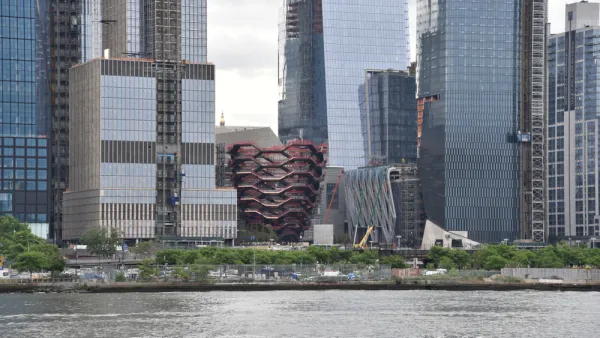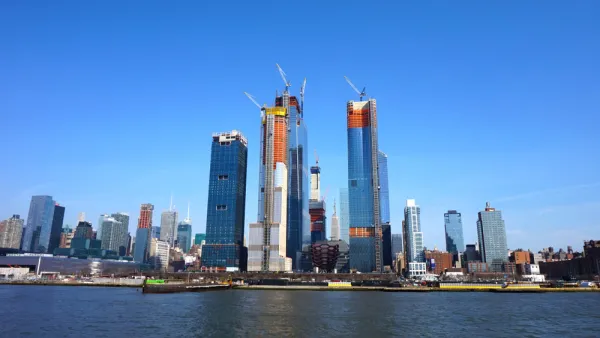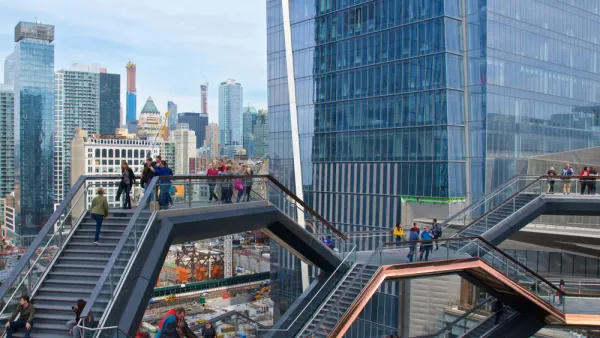The size and scale of Hudson Yards in the skyline of Manhattan will match the size and scale of public and private investment in the project. The project's effect in the city's economy will be just as conspicuous.

Greg David says there's a big angle to the story about the Hudson Yards project in New York City that is going unnoticed amidst a dispute between unions and developer The Related Cos.
The bigger story is the way Hudson Yards has—faster than anyone expected—fulfilled the two goals of the government officials who set it in motion: create capacity for the New York economy to expand and revive a moribund waterfront section of Manhattan. Its success can be attributed to more than $600 million in direct public investment and a very lucrative tax break.
The first phase of Hudson Yards, built with more than $18 billion in equity and debt over a storage and maintenance yard for Long Island Rail Road trains, will open to the public next March 14, Related says. The numbers couldn't be more impressive. The developer has leased or sold 7 million square feet of office space to tenants ranging from luxury accessories specialist Tapestry to ad agency BCG to media giant Time Warner to BlackRock, the largest money manager in the world. Some 55,000 thousand people will work there every day.
The article includes a history of the project, from its early days as a cornerstone in the Bloomberg Administration's pitch to bring the Olympics to New York City in 2012 (the games were ultimately played in London) to the big public investments that have set the stage for the success of Hudson Yards.
FULL STORY: The story of Hudson Yards is now the story of New York

National Parks Layoffs Will Cause Communities to Lose Billions
Thousands of essential park workers were laid off this week, just before the busy spring break season.

Retro-silient?: America’s First “Eco-burb,” The Woodlands Turns 50
A master-planned community north of Houston offers lessons on green infrastructure and resilient design, but falls short of its founder’s lofty affordability and walkability goals.

Delivering for America Plan Will Downgrade Mail Service in at Least 49.5 Percent of Zip Codes
Republican and Democrat lawmakers criticize the plan for its disproportionate negative impact on rural communities.

Test News Post 1
This is a summary

Test News Headline 46
Test for the image on the front page.

Balancing Bombs and Butterflies: How the National Guard Protects a Rare Species
The National Guard at Fort Indiantown Gap uses GIS technology and land management strategies to balance military training with conservation efforts, ensuring the survival of the rare eastern regal fritillary butterfly.
Urban Design for Planners 1: Software Tools
This six-course series explores essential urban design concepts using open source software and equips planners with the tools they need to participate fully in the urban design process.
Planning for Universal Design
Learn the tools for implementing Universal Design in planning regulations.
EMC Planning Group, Inc.
Planetizen
Planetizen
Mpact (formerly Rail~Volution)
Great Falls Development Authority, Inc.
HUDs Office of Policy Development and Research
NYU Wagner Graduate School of Public Service





























